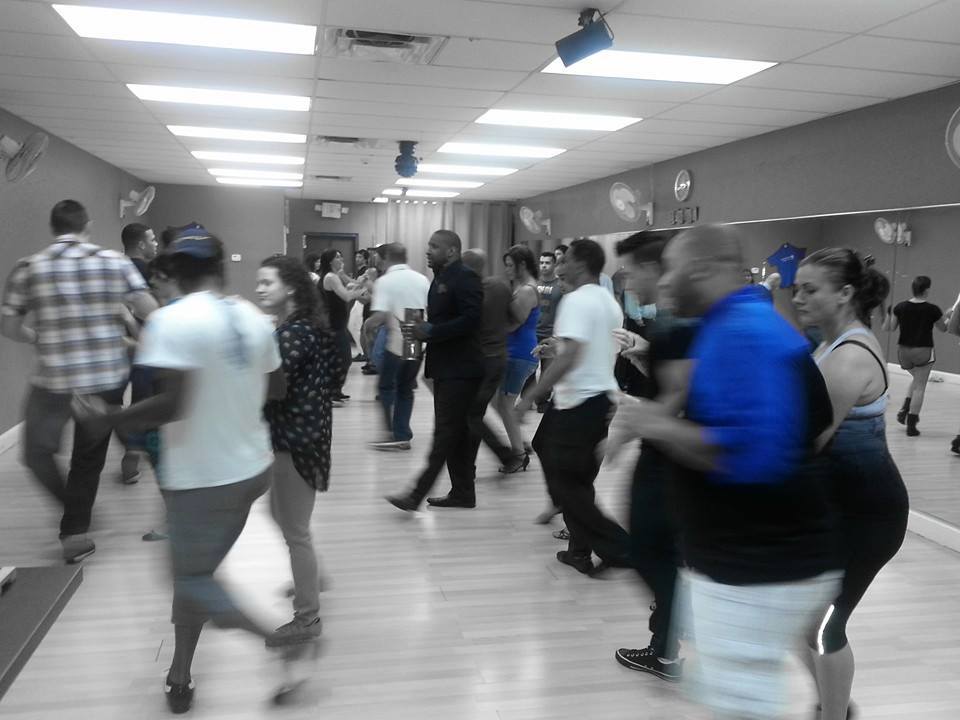Bachata is a style of dance that originated in the Dominican Republic. It is danced widely all over the world but not identically.
The basics of the dance are three-step with a Cuban hip motion, followed by a tap including a hip movement on the 4th beat. The knees should be slightly bent so the performer can sway the hips easier. The movement of the hips is very important because it’s a part of the soul of the dance. Generally, most of the dancer’s movement is in the lower body up to the hips, and the upper body moves much less.
In partnering, the lead can decide whether to perform in the open or closed position. Dance moves, or step variety, during performance strongly depend on the music (such as the rhythms played by the different instruments), setting, mood, and interpretation. Unlike Salsa, Bachata dance does not usually include complex turn patterns, but they are used increasingly as the dance evolves. The leading is done like in most other social dances, with a “pushing and pulling” hand and arm communication. Hand and arm communication are better conveyed when most of the movement is performed by the lower body (from the waist down), i.e., hips and footwork. Bachata is commonly known by many as a very sensual dance. To most, it may seem that way. However, that is not what it is intended to be taken as. Bachata is a dance done by a person with another to express the feelings one has for a specific other. It is believed by most that the more smoothly and more frequently the hips are used and moved, the more feelings the individual has for the other. That said, bachata originated as a sort of “mating call,” if you were selected for a dance of bachata, you were chosen as a mate; two dances with the same individual “sealed the deal.”
The original dance style from the Dominican Republic in the Caribbean is a basic dance sequence with 8 counts moving within a square. Dancers in the Western World later began developing a more straightforward pattern in a total 8 count, but with a side-to-side motion. Both Styles consist of 3 steps standard and then a tap step. The tap is often accompanied by a “pop” of the hips and is sometimes substituted with syncopations (steps between the beats – some similar to cha-cha-cha steps and others much different). Bachata music has an accent in rhythm at every fourth count. Often, this is when dancers will tap-step & pop their hips – this is called dancing the bachata to the music (because the first step after the pop falls on the 1st beat of the measure). But bachata can also be danced to different timings if it’s danced to one particular instrument instead. The tab or ‘pop’ is done opposite the last step, while the next step is taken in the same direction as the tap or pop. The dance direction changes after the tap or fourth step.

